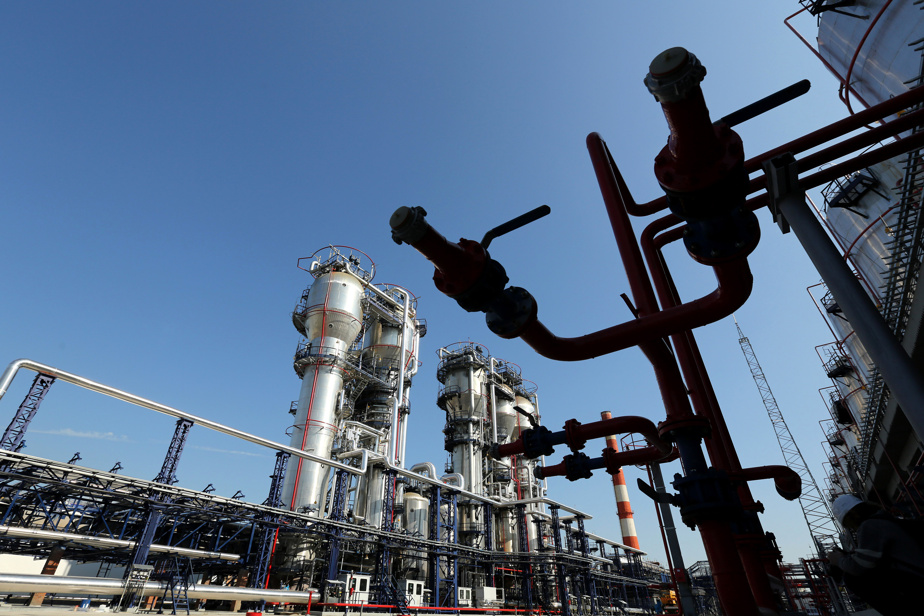(Kyiv) Ukraine has announced its intention not to renew its contract with Russia until December 31 to transport Russian gas to Europe via its extensive network of gas pipelines.
A decision deplored by the Kremlin and which brings its share of uncertainties for European countries, historically importers of Russian gas despite their efforts to free themselves from it since the invasion of Ukraine.
Ends on December 31
Ukrainian President Volodymyr Zelensky announced on Tuesday that “no one” would extend the agreement with Russia, which had been in force until now despite the war, financially benefiting both sides.
Russian gas transits through Ukraine under a contract established in 2019 for five years, until December 31, 2024, between the Ukrainian companies Naftogaz and GTSOU, and the Russian giant Gazprom.
The text provides for “a minimum volume of transit: 65 billion cubic meters for 2020 and 40 billion m3 for 2021-2024,” according to Naftogaz.
Volodymyr Zelensky had at the time welcomed an agreement which was expected to bring in “more than 7 billion dollars”.
However, one of the two entry points for Russian gas into Ukraine, in Sokhranivka (east), in the zone occupied by Moscow, has been at a standstill since Kyiv declared a case of “force majeure” in May 2022 following the Russian invasion.
The other main infrastructure, the measuring station in Sudja, in the Russian region of Kursk, came under the control of Ukrainian forces in early August during a surprise offensive.
The main beneficiaries
Russia has been sending its gas to Europe via two routes since the sabotage of Nord Stream in September 2022 in the Baltic Sea.
The first is the TurkStream gas pipeline and its extension, Balkan Stream, under the Black Sea, to Bulgaria, Serbia and Hungary.
The second route runs through Ukraine to Slovakia, which is one of the main beneficiaries, along with Hungary, Austria and Italy.
Russian gas transit to Europe via Ukraine fell by almost 2/3 compared to 2021 to 14.65 billion m3 in 2023, which is just under half of Russia’s total gas exports to Europe, according to official figures.
Its daily exports to Europe via Ukrainian territory currently amount to about 42 million m3according to Gazprom.
Azerbaijan as an alternative?
The European Union, whose gas imports from Russia have fallen to less than 10% in 2023, assures that the countries impacted by the end of the contract have “other supply solutions”.
Italy, for example, could buy more gas from Algeria, but Slovakia, due to its geographical position, has no obvious alternative.
The share of Russian gas in Bratislava’s imports was still 69% in 2023, and around 60% for Austria, according to the EU.
In early July, Volodymyr Zelensky indicated that Kyiv was in discussions with Azerbaijan, a major producer of natural gas, to replace Russian gas transiting Ukraine to Europe with Azerbaijani gas.
His Azerbaijani counterpart Ilham Aliyev revealed that the EU and Kyiv had “approached” him to “facilitate” discussions with Moscow and reach an agreement that would suit all parties, a priori by using Russian infrastructure to transport gas from Baku to the Ukrainian network.
Another solution would be for Gazprom to supply more of its gas through TurkStream.
But the capacity of this route remains limited at this stage, despite Vladimir Putin’s stated desire to develop “a gas hub” in Turkey.
Losses for Gazprom and Kyiv
Gazprom has been in financial difficulty since the European Union, its historic customer, significantly reduced its imports of Russian gas, even saying it wanted to free itself from all Russian natural gas by 2027.
According to experts quoted by the Russian daily Vedomosti, the Russian giant could lose around 5 billion euros in annual revenue for its deliveries via Ukraine, or around 6% of its turnover.
Ukraine, for its part, will lose about 720 million euros in annual revenue (nearly 0.5% of its GDP), even if this money is mainly used for the operating costs of the gas network.
